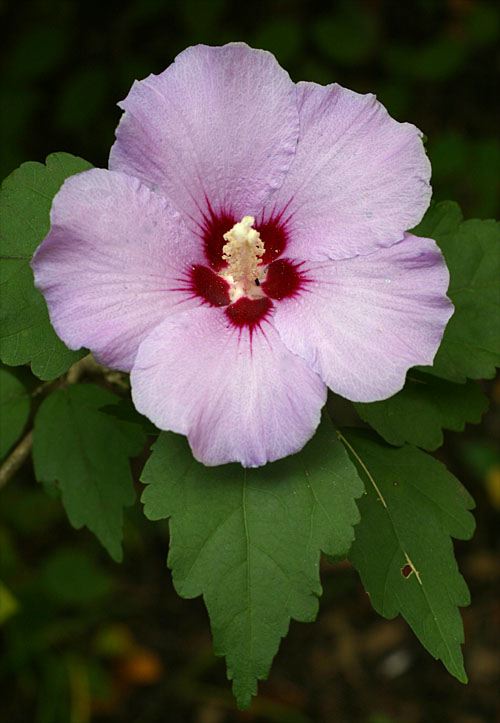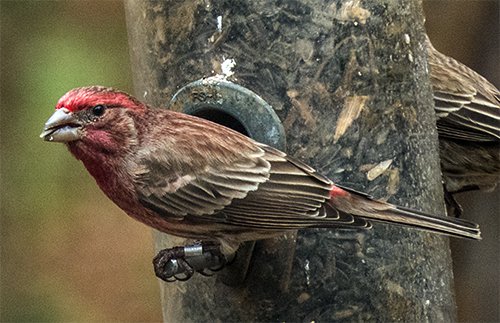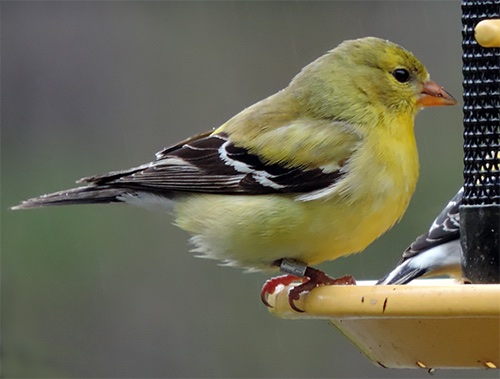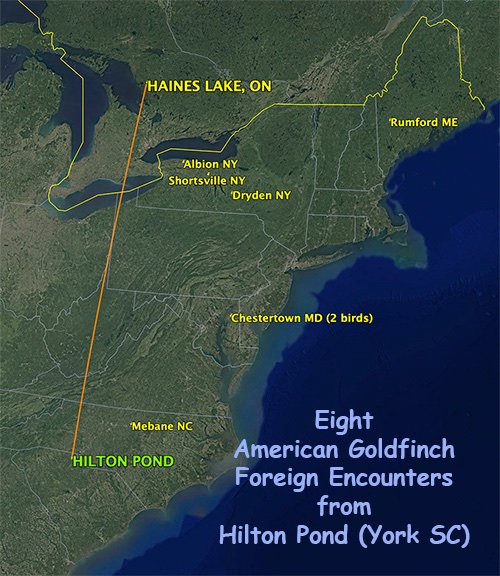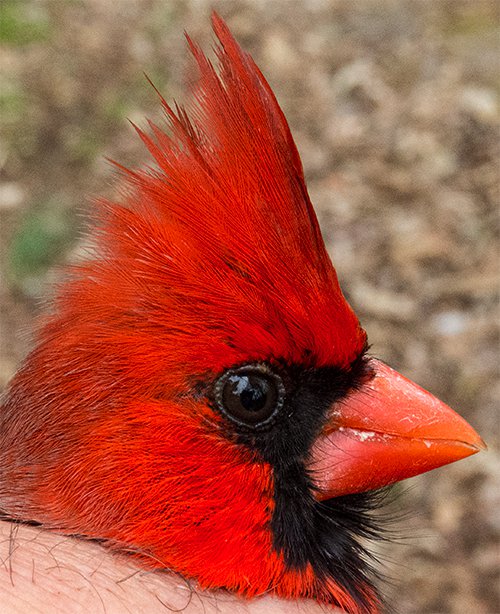- Established 1982 -HOME: www.hiltonpond.org
THIS WEEK at HILTON POND Subscribe for free to our award-winning nature newsletter (Back to Preceding Week; on to Next Week) |
JUNE 2019: Early June 2019 brought lots of rain to Hilton Pond Center and to the surrounding Carolina Piedmont. On the 11th the Catawba River that flows through eastern York County SC was at flood stage and all floodgates on Lake Wylie Dam in Rock Hill were open. This was excellent for generating electricity, but not so great for folks who live or work in low-lying areas downstream. Some flooded did occur, but at the Center we remained fairly high and relatively dry, even though we had 1.76" of rain on 7-9 June--plus another 1.18" on the 12th. Needless to say, all this precipitation means water in Hilton Pond is at a comfortably high level that is rather unusual for summer months.
All text, maps, charts & photos © Hilton Pond Center When it rains this much in spring and summer, one can be fairly sure to see two things in the field: 1) Fungi (such as the Amanita mushroom above, whose subterranean hyphae take advantage of moist conditions by sending up fruiting bodies that yield reproductive spores); and, 2) Eastern Box Turtles, Terrapene carolina carolina (slow-moving native reptiles that relish newly sprouted mushrooms as much as do French gastronomes).
All text, maps, charts & photos © Hilton Pond Center As rains were abating around Hilton Pond we did come across an ancient box turtle we knew from many past encounters in the woods (see our latest photo above); the spots on her shell were well-worn but distinctive, so we recognized her right off. Actually, we didn't have to go far to find this aged turtle since she had wandered into the back yard beneath a bird feeder. Less than a fastidious eater, she had tell-tale mushroom crumbs dangling from her craw.
All text, maps, charts & photos © Hilton Pond Center Eastern Box Turtles are indeed long-lived, with some specimens thriving for more than a century. Many of them never make it to hatching, however, because Striped Skunks (above), Coyotes, and other mammalian predators relish turtle eggs even more than turtles like mushrooms. Once it gets up to two inches across, a box turtle usually holds its own by drawing in its appendages and clamping closed its shell until the hungry predator loses interest. Then their only real enemy is a thoughtless, inattentive, or truly evil person behind the wheel of a motor vehicle. Mostly because of loss to highway traffic, lawn mowers, development, and agricultural equipment, the once-common Eastern Box Turtle is now considered a vulnerable species.
A more accurate method for sexing Eastern Box Turtles is to examine the carapace (top shell). In females like the one we saw this week, the rear end of the carapace is very high and sometimes even squared off--allowing more room for eggs. In a male, the carapace tapers downward, and the plastron (lower shell) has a depression that allows him to fit closely against the female's shell when copulating. The male also has long hind claws--the better with which to jam open the tight-fitting shell of a female during mating, thus avoiding painful injury.
All text, maps, charts & photos © Hilton Pond Center Just like in May, "new" Ruby-throated Hummingbirds--those that arrive at Hilton Pond Center without bands--were locally scarce in June, with only 11 banded for the month. Fledgling ruby-throats finally appeared during June's final week, when we caught one young male and five young females.
All text, maps, charts & photos © Hilton Pond Center One way to age young females is to look carefully at their back plumage (above), in which ALL the feathers have brown edging that eventually wears off. Young males are more easily aged because most have throat streaking and one or more red gorget feathers (below). The streaking results from feathers with dark greenish-black centers that give an appearance not unlike a five-o'clock shadow in humans. (CAVEAT: Some adult females--and even a few immatures--show varying degrees of gray gorget streaking, faint through dark, although their throats are much more likely to appear white at your feeder. Once, out of 6,200+ RTHU bandings, we had an old adult female with a single red throat feather against a gorget of white.)
All text, maps, charts & photos © Hilton Pond Center Four adult females and one adult male rounded out our captures for the just-completed month, giving us 24 total RTHU banded for 2019--right about our 36-year average through 30 June. Activity is bound to increase dramatically in July and August as more fledglings appear, with local numbers peaking the first week or so in September just before the bulk of southbound migrants begin to depart.
All text, maps, charts & photos © Hilton Pond Center As we have mentioned in other installments, one reason hummer visits seem to decline in May and June after an initial blitz in April is because natural food sources become much more plentiful. Populations of spiders and tiny insects such as midges, mosquitoes, and fruit flies explode with warmer weather, providing all-important fats and proteins for adult hummers and their nestlings. Nectar flowers also become more available as spring slides into summer, giving ruby-throats a choice between natural carbohydrates and sugar water in feeders. Even adult male hummers take time from defending territories to visit various blossoms, We're confident the pollen on his crown is from Trumpet Creeper, Campsis radicans (right), an orange tubular native flower in which pollen-nearing stamens are at the top rim where they come in contact with the hummer's forehead. We're less sure about the source of the male's throat pollen, but we suspect it is the large, flat flower of Rose of Sharon, Hibiscus syriacus (below).
All text, maps, charts & photos © Hilton Pond Center Rose of Sharon is an exotic ornamental shrub planted at Hilton Pond long before we moved here; several still grow in scattered places across our 11 acres. This year they've been blooming since mid-May, attracting hummers with flowers than range from white to pink to blue or lilac (above). In fact, it's one of Operation RubyThroat's "Top Ten Non-native Hummingbird Plants." (CAVEAT: Rose of Sharon can escape from cultivation, but in most cases it's easily controlled by pruning shears.) As follow-up to our May installment, we should mention that even though June brought in few new Ruby-throated Hummingbirds, we continued to recapture RTHU banded in previous years. Added to the 41 returns in April and May were ten more in June, giving us 51 for the year--a total exceed only by 62 in 2017 and 58 last year. Although we handle progressively fewer returns after July arrives, there's still a long way to go in the current banding season. We could easily surpass our existing record. Ruby-throat returns in June included two second-year birds banded last year as recent fledglings, plus three after-second-year, two third-year, two fourth-year, and an amazing sixth-year female we banded as a young bird in 2014 and captured every year since. All text, maps, charts & photos © Hilton Pond Center
All text, maps, charts & photos © Hilton Pond Center We were excited in June to get not one but TWO of those rare "Report to Bander" e-mails from the federal Bird Banding Lab--always welcome because they mean someone somewhere somehow has encountered one of our banded birds from Hilton Pond Center. The first report was less surprising but nonetheless important: On 10 March 2019 someone living less than two miles from the Center found a dead male House Finch (typical individual, above) we had banded four months earlier on 29 December 2018. We suspect the bird was a picture window kill since there were no reported signs of disease or damage from a predator such as a free-roaming cat.
All text, maps, charts & photos © Hilton Pond Center The second report was much more interesting for a couple of reasons, not the least being it documented an encounter in Haines Lake, Ontario--a long way almost due north of Hilton Pond (see map below). In this case Rhonda Murphy had seen a banded female American Goldfinch at her feeder in Canada and managed to use skill, patience, and camera to get images of the bird's right leg. Rhonda's photo series allowed her to determine the complete number was 2870-24073, which she reported on 20 May 2019 via the Bird Banding Lab's on-line page. In response to our inquiry, Rhonda e-mailed us these details:
After her report was filed, the Lab informed Rhonda we had trapped and banded the goldfinch just five months previous (24 January) here at the Center, undoubtedly when the bird was still on its wintering grounds. Sometime between then and May this goldfinch traveled at least 718 straight-line air miles, returning to an area in Ontario (see map)--probably near where she hatched and where she would be ready to mate this summer. This was an astounding trip for a bird that weighs only half an ounce (~15 grams). Thanks to Rhonda Murphy for her persistence in determining the bird's band number, for reporting her encounter to the Bird Banding Lab, and for providing us with the photo above of this far-flying female American Goldfinch in bright breeding plumage.
All text, maps, charts & photos © Hilton Pond Center NOTE: Our other seven foreign encounters of banded American Goldfinches from Hilton Pond (see map above) occurred in New York State (three locations), Maryland (same location for two birds), Maine, and North Carolina. From 1982 through June 2019 we've banded 11,462 goldfinches at the Center, with a mere 0.07% of these encountered and reported outside York County SC; we consider this a very low percentage for a species that in the Carolina Piedmont is primarily a migratory species that breeds further north. Since they are flocking birds that hang out at feeders, we might expect banded American Goldfinches from Hilton Pond Center to wander and be found (or recaptured) and reported much more often. We're hopeful our readers will always check the legs of any bird they find and report band numbers to the federal Bird Banding Lab. Every such encounter helps us understand a little more about avian behavior. All text, maps, charts & photos © Hilton Pond Center
All text, maps, charts & photos © Hilton Pond Center Foreign encounters of banded birds like our American Goldfinch photographed in Ontario tell us about migration, while later-year returns of our Ruby-throated Hummingbirds banded at Hilton Pond Center document site fidelity, but another benefit of banding is it reveals secrets about how long birds live. Such was the case this week when we mist netted a banded male Northern Cardinal so old we should have called him Methuselah. That day we also caught several recently fledged male cardinals but the bird in question (above) looked very different: Intensely red plumage, deep orange-red bill, jet black mask, and tall and well-formed crest. In addition, his toes were slightly gnarled--almost like an old human with arthritis. He was nonetheless spry and tried to bite several times as we read his well-worn band number: 2411-56350. Upon consulting our banding records we discovered this cardinal was indeed an old-timer, banded as a locally produced youngster on 24 June 2011. That made him nine years old at time of this month's recapture. To our knowledge local cardinals don't migrate, so he was a savvy bird that likely stayed year-round. We caught him only one other time, in a seed-baited trap on 7 March 2017. The Center hasn't had many birds reach nine years, but our elderly Northern Cardinal was actually a whippersnapper compared to two in Pennsylvania and Virginia that were in at least their 16th year at latest encounter. Long live Northern Cardinals . . . and box turtles, and finches, and hummingbirds! All text, maps, charts & photos © Hilton Pond Center
Checks also can be sent to Hilton Pond Center at: All contributions are tax-deductible on your Don't forget to scroll down for Nature Notes & Photos, |
|---|
|
"This Week at Hilton Pond" is written and photographed by Bill Hilton Jr., executive director of Hilton Pond Center for Piedmont Natural History
|
|
|
Please refer "This Week at Hilton Pond" to others by clicking on this button: |
|



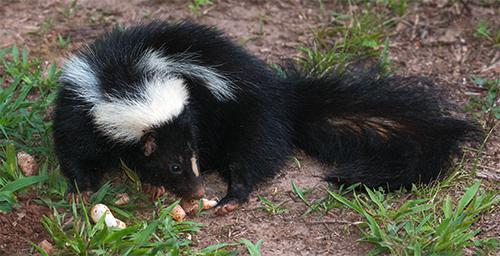
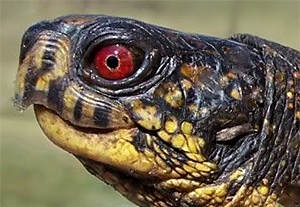 Among box turtles, the mature male usually has eyes of deep crimson. Females typically have brown or yellow-orange irises, although the elderly one we photographed this week had a hint of red.
Among box turtles, the mature male usually has eyes of deep crimson. Females typically have brown or yellow-orange irises, although the elderly one we photographed this week had a hint of red. 
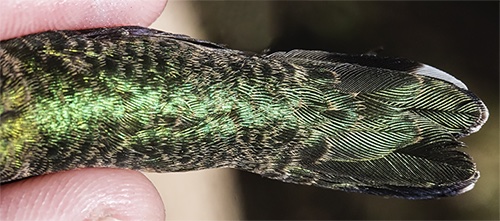
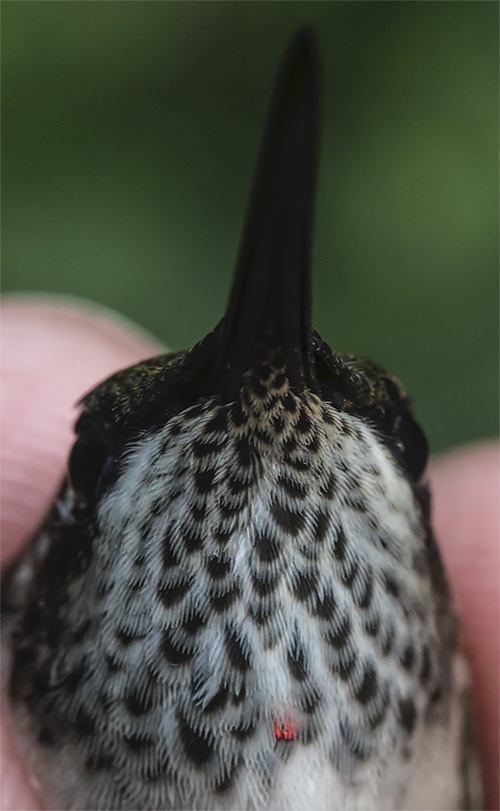
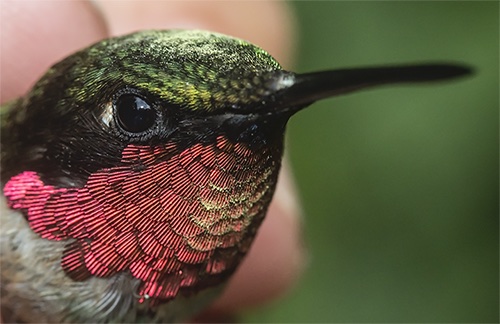
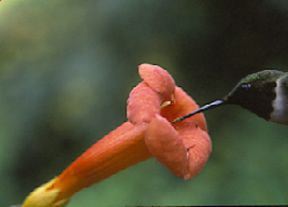 as indicated by pollen deposits on the head and gorget of the RTHU in the photo above.
as indicated by pollen deposits on the head and gorget of the RTHU in the photo above.